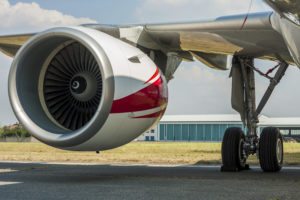
Last month, China and Russia partnered together to launch the China-Russia Commercial Aircraft International Corporation (CRAIC). Their goal, to build a 280-passenger, twin aisle, wide-body jet to compete with Airbus and Boeing, will cost an estimated $13-20 billion. According to Aviation Week, CRAIC is aiming to launch its first flight in 2022 or 2023 and be fully-serviceable by 2025-2027.
While CRAIC’s headquarters and assembly will be in Shanghai, the jet’s research and development will be in Moscow, Russia. The group, still in its infancy stages, are now seeking out engine suppliers. As with the other modern jets, the China-Russia 280-seat plane, or C929 (its unconfirmed moniker), will most likely integrate into the global supply chain and utilize engine makers such as Pratt & Whitney, GE, and Rolls-Royce; as well as other Western manufacturers such as Honeywell and United Technologies for its cockpit avionics and flight systems.
This is good news for the surface finishing industry and possibly the environment. When developing a new plane, CRAIC is not mandated to use legacy systems and drawings utilizing cadmium coatings for corrosion protection. Instead new, environmentally-friendly, quality alternatives such as zinc-nickel or tin-zinc can be used. By incorporating new materials into the original equipment manufacturers specifications, the latter touch-up applications on landing gear, flap tracks, bushing bores, and other structural components, can also use them, essentially helping phase out cadmium.
CRAIC believes a major advantage to breaking the duopoly of Airbus and Boeing will be reduced costs. They hope that by designing a plane with lower operating costs, more international buyers will be interested. They also plan to sell maintenance services, logistics services, and upgrade packages to bring in additional revenue.
For information on cadmium alternatives, visit our Cadmium Plating Knowledge Hub.
To read the full article by Jeffrey Lin and P.W. Singer for Popular Science , visit www.popsci.com

 Chinese (Simplified)
Chinese (Simplified)  English (UK)
English (UK)  French
French  German
German  Spanish
Spanish  Swedish
Swedish 